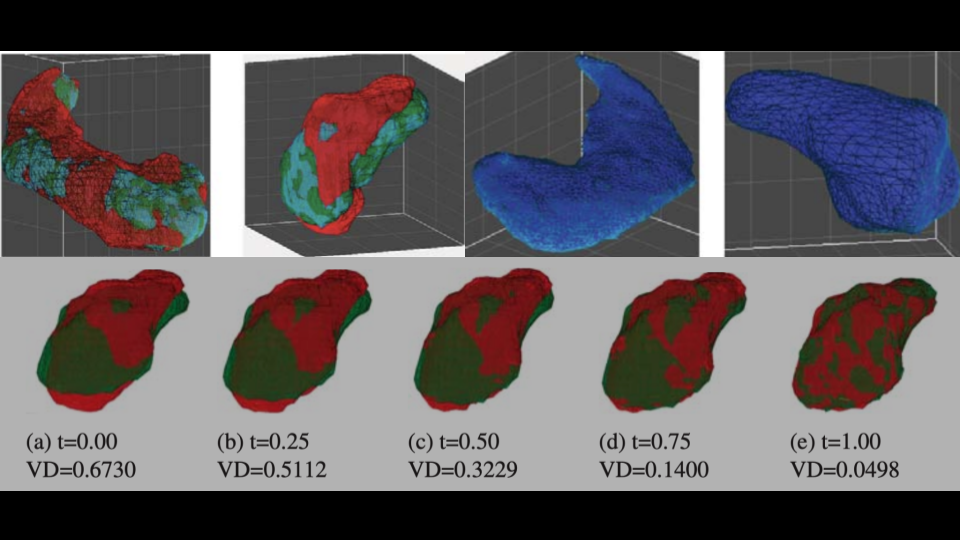A fast method for shape template generation
The shape of a biological structure extracted from medical images is very useful to diagnose structural abnormalities. For instance, the shape variation in hippocampus (from MRI) is a biomarker for Alzheimer’s disease. Any such analysis requires a shape template. Creation of shape templates involves registration of a group of shapes. The large deformation diffeomorphic metric mapping (LDDMM) based approach is popular for the registration task but is computationally expensive which becomes prohibitive in shape template creation. We address the computational bottleneck by proposing a complete pipeline for building a biological shape model using an approach based on diffeomorphic demons which has a lower computational complexity and a comparable performance to LDDMM. We employ varifolds which are a distribution of unoriented tangent spaces for this purpose. The advantages of using varifolds for shape representation are as follows. 1) They are orientation-invariant and suitable for both continuous and discrete shapes, 2) They have proven (using the field of geometric measure theory) efficiency and 3) They enable comparison of two shapes without any point-point matching.
LDDMM based approaches have been used for shape registration and template creation including the state of the art reported. The general strategy adopted is to move an initial template towards an optimal shape template via iterative registration. Since the initial template is usually a random element from a set of shapes, the algorithm has to perform N registrations in each iteration, where N is the number of shapes in the set. Improvement in the time complexity is possible with a better choice of the initial template. This is done by choosing random pairs from the set and computing the midway elements first. These are then moved toward the population’s centroid to derive a template which is a better choice for the initial template in shape template creation.
In the context of computational anatomy, it is reasonable to assume that large scale deformation will not be required for template creation since the structures being aligned are from the same class. Hence, we propose a method for template creation which is based on (i) an iterative midway deformation by leveraging the common geometric features that may be present among the shapes (ii) with the deformation based on varifolds and Log-demon’s algorithm. This method, which is guaranteed to generate a unique template, is computationally lighter as it is based on demons based registration and requires fewer registration steps.
